Macau, China – Sunday, February 6th, 2011
 The largest of the student-organized trips by HKUST took us on a day trip to Macau, the former Portuguese city-state colony that, like Hong Kong, now finds itself in a unique administrative situation with the mainland government under a “One Country Two Systems” principle. Unlike Hong Kong, Macau is truly tiny, fitting its entire urban population in less than 13 square miles of mostly reclaimed land from the surrounding sea. It’s also a tourist hot spot, thanks to the legalization of gambling which has made it the Las Vegas of Asia, if massive income inequality was on full display from the Strip. Our tour would try to show us more of the history of Portuguese and Cantonese influence in Macau, but the question of what’s at the heart of Macau’s identity would elude me on this short day trip.
The largest of the student-organized trips by HKUST took us on a day trip to Macau, the former Portuguese city-state colony that, like Hong Kong, now finds itself in a unique administrative situation with the mainland government under a “One Country Two Systems” principle. Unlike Hong Kong, Macau is truly tiny, fitting its entire urban population in less than 13 square miles of mostly reclaimed land from the surrounding sea. It’s also a tourist hot spot, thanks to the legalization of gambling which has made it the Las Vegas of Asia, if massive income inequality was on full display from the Strip. Our tour would try to show us more of the history of Portuguese and Cantonese influence in Macau, but the question of what’s at the heart of Macau’s identity would elude me on this short day trip.
Although there are multiple ways to get to Macau, the most traditional (and perhaps still the most popular) is to take the ferry 40 miles across the South China Sea, although more modern means (like an entire bridge connecting the two sides, still under construction at the time of my visit). The excursion took just less than an hour, an ideal time to sleep a bit longer due to the tour’s early start time.
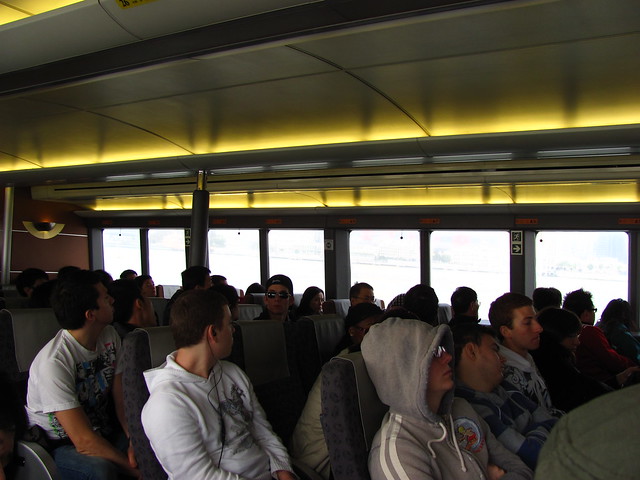
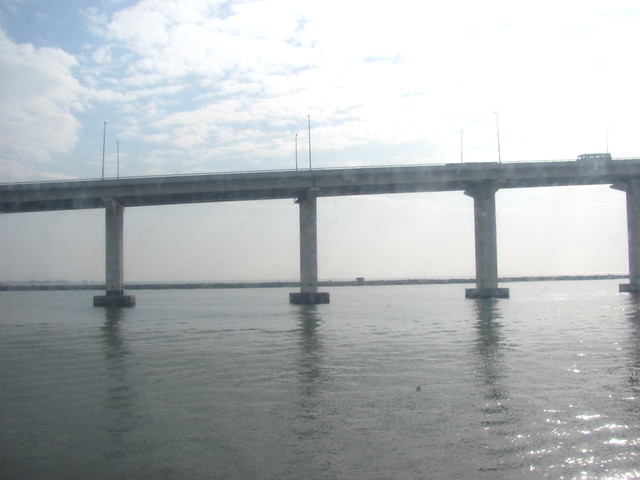
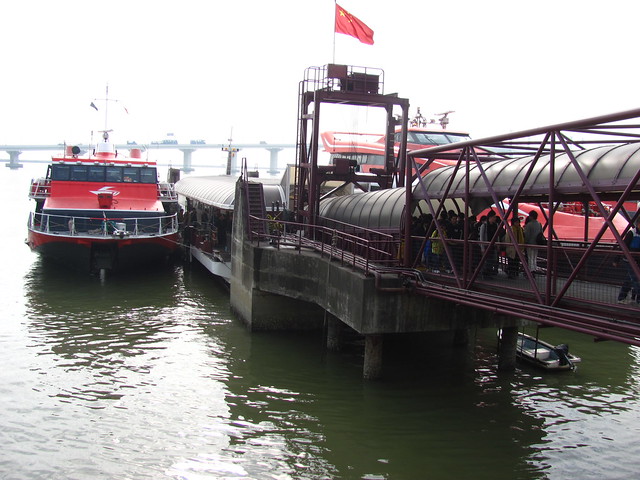 Once we cleared customs (yes, even though they’re part of the same country you must pass through customs when crossing between Hong Kong, Macau, or the mainland) our student tour guides split us into two more manageable groups.
Once we cleared customs (yes, even though they’re part of the same country you must pass through customs when crossing between Hong Kong, Macau, or the mainland) our student tour guides split us into two more manageable groups.
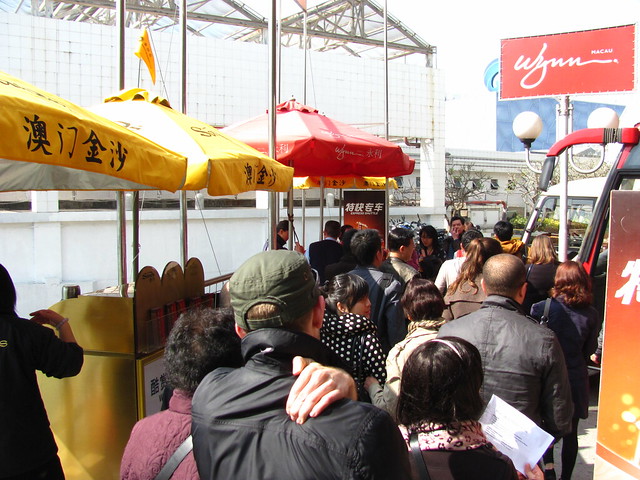
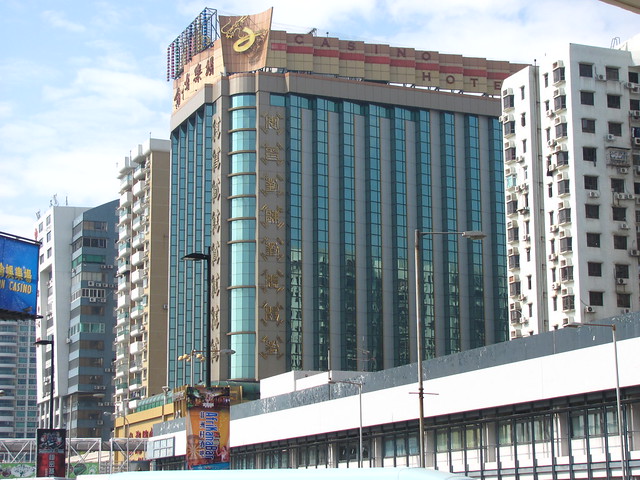
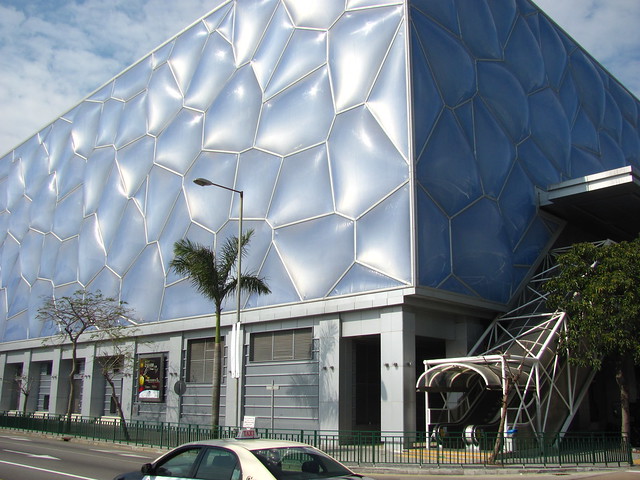
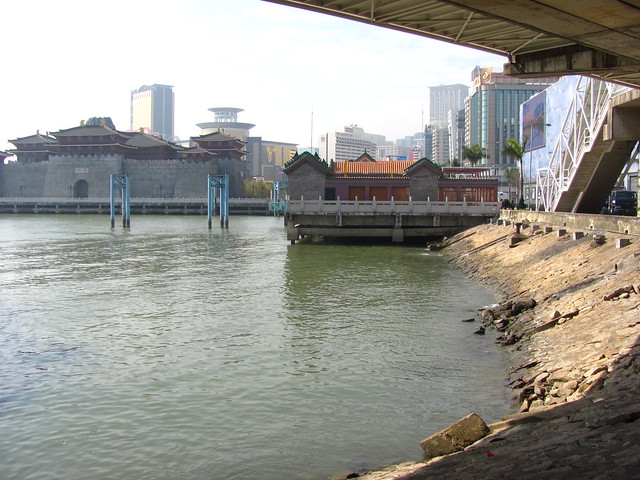
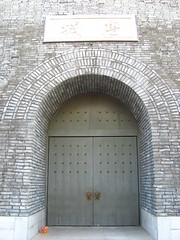 Our group began the morning at the Macau Fisherman’s Wharf, which despite the name conjuring ideas of touristic seaside piers, is in fact a modern, self-contained, fully themed commercial development. Yes, I said themed, although how it related to the concept of a Fisherman’s Wharf, much less had any overarching principle (which included variously a volcano, a Chinese palace, ancient ruins, and a European street) wasn’t entirely clear. Still, I was in luck, as the Macau Fisherman’s Wharf is still to this day the only entry from Macau that can be found on RCDb, even though the roller coaster and amusement portions of the development had sailed away long before I ever got there. As such, there was extremely little there to activate the space (especially still in the morning), and it showed by the complete absence of humanity, despite Macau being the most densely populated region in the world. It quickly became clear our student tour guides didn’t have a very good plan of what they hoped to show us on this part of the tour, but I didn’t particularly mind it because this was exactly the sort of weird, postmodern themed landscape of alienation I would probably check out if I had conducted my own self-guided visit to Macau. Only now I could explore it with thirty or so other classmates.
Our group began the morning at the Macau Fisherman’s Wharf, which despite the name conjuring ideas of touristic seaside piers, is in fact a modern, self-contained, fully themed commercial development. Yes, I said themed, although how it related to the concept of a Fisherman’s Wharf, much less had any overarching principle (which included variously a volcano, a Chinese palace, ancient ruins, and a European street) wasn’t entirely clear. Still, I was in luck, as the Macau Fisherman’s Wharf is still to this day the only entry from Macau that can be found on RCDb, even though the roller coaster and amusement portions of the development had sailed away long before I ever got there. As such, there was extremely little there to activate the space (especially still in the morning), and it showed by the complete absence of humanity, despite Macau being the most densely populated region in the world. It quickly became clear our student tour guides didn’t have a very good plan of what they hoped to show us on this part of the tour, but I didn’t particularly mind it because this was exactly the sort of weird, postmodern themed landscape of alienation I would probably check out if I had conducted my own self-guided visit to Macau. Only now I could explore it with thirty or so other classmates.
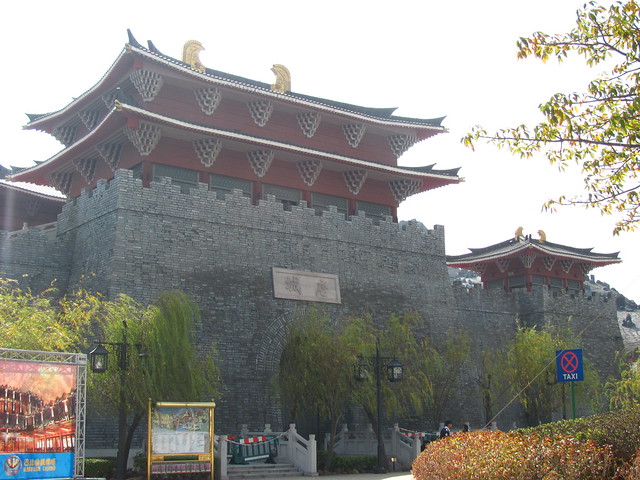


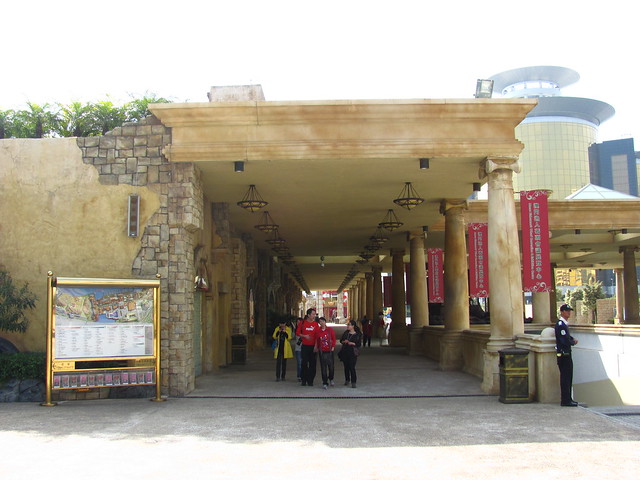
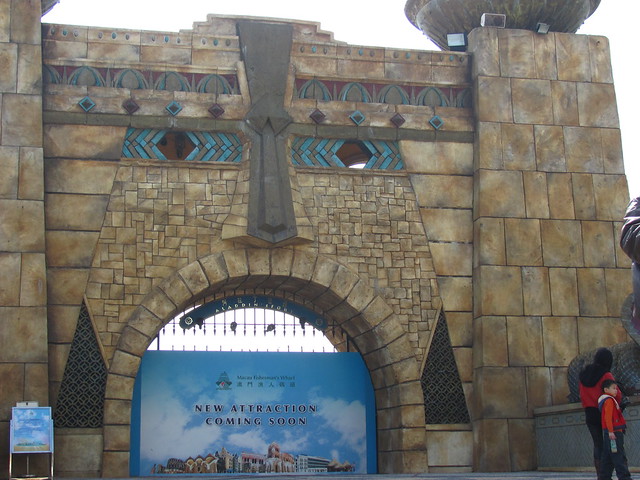
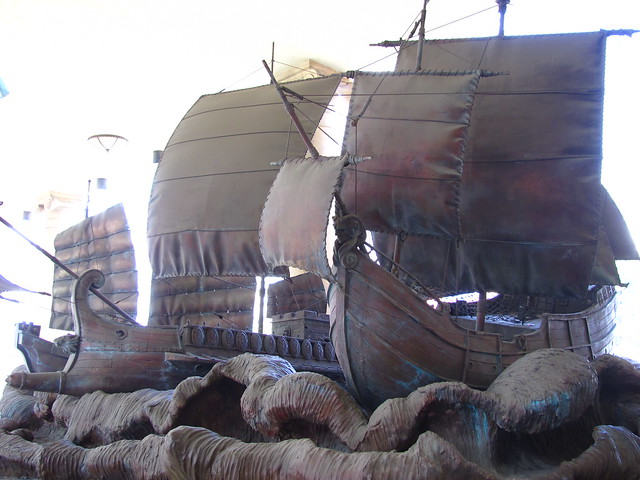
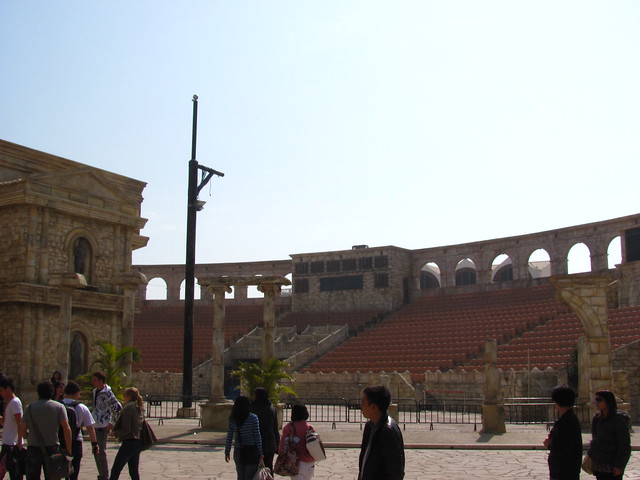
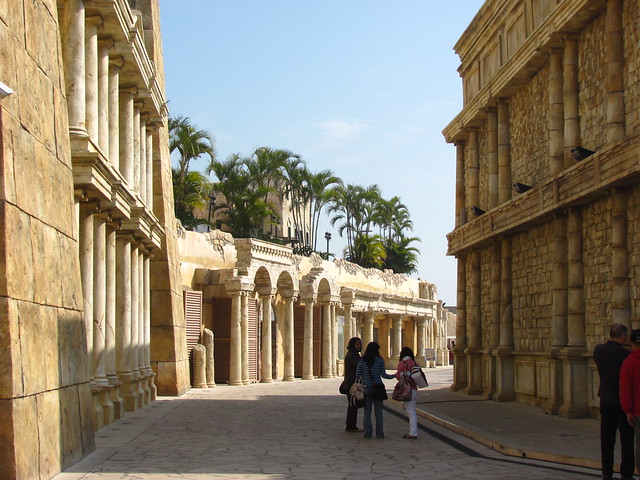
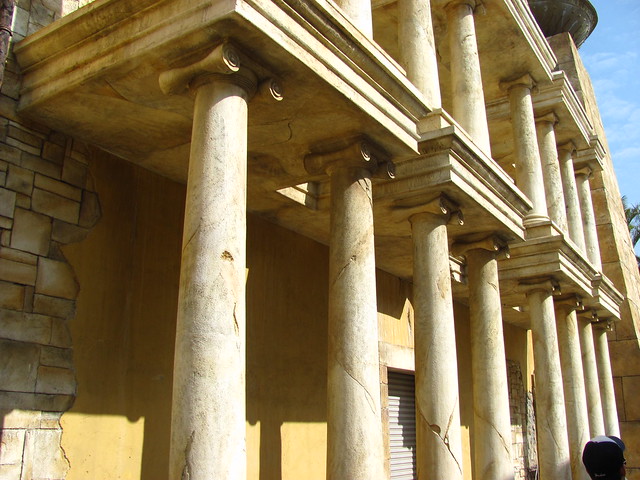
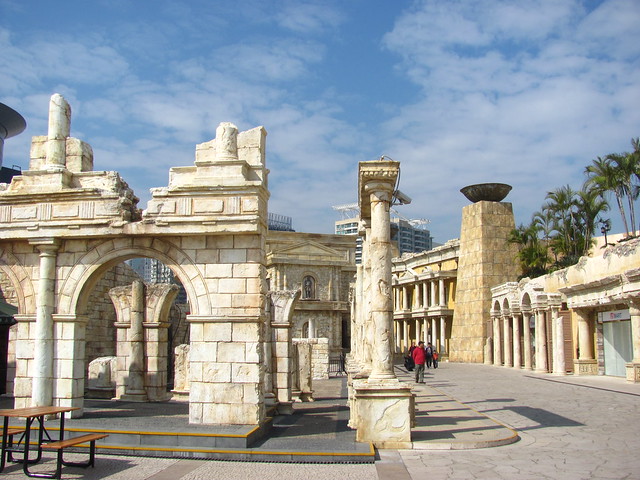
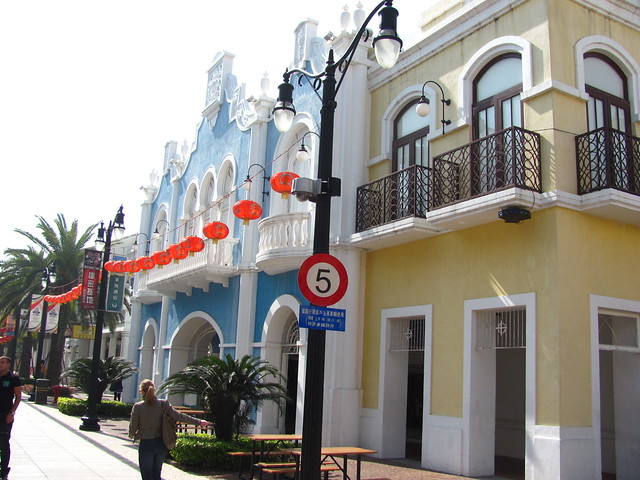
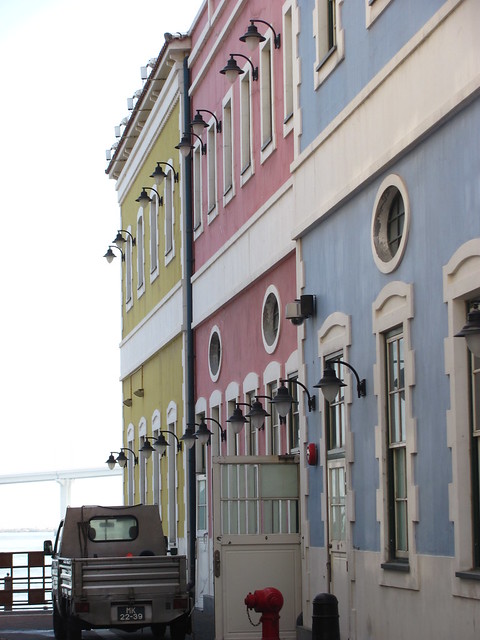

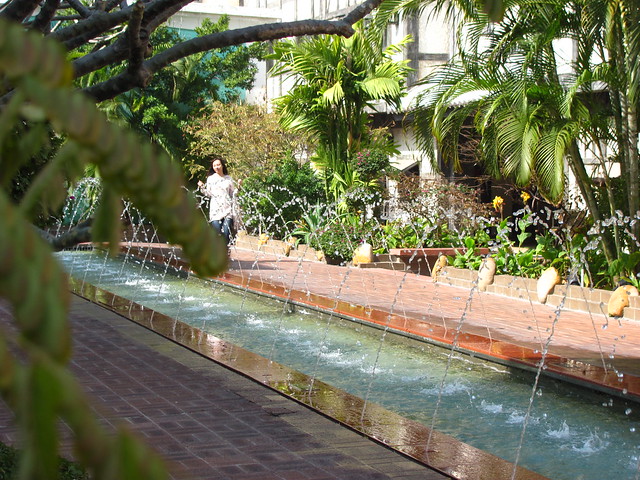
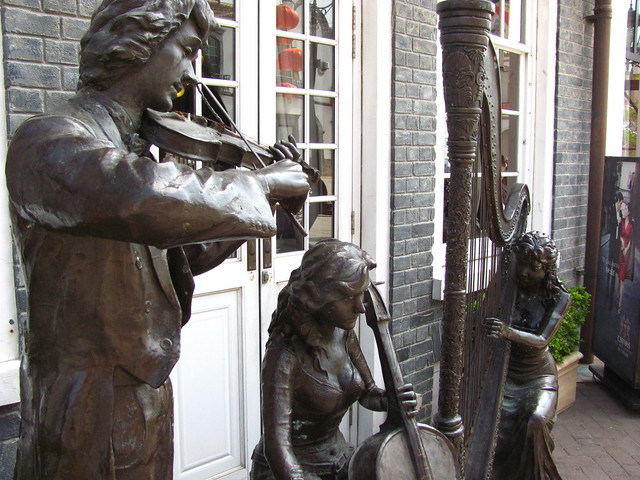
 Of course, while all the nice thematic design remains completely empty, once we reached the flea market at the far end of Fisherman’s Wharf there was suddenly some semblance of human activity.
Of course, while all the nice thematic design remains completely empty, once we reached the flea market at the far end of Fisherman’s Wharf there was suddenly some semblance of human activity.
 Turning back around to return through the Valley of Desolation that is Macau Fisherman’s Wharf.
Turning back around to return through the Valley of Desolation that is Macau Fisherman’s Wharf.
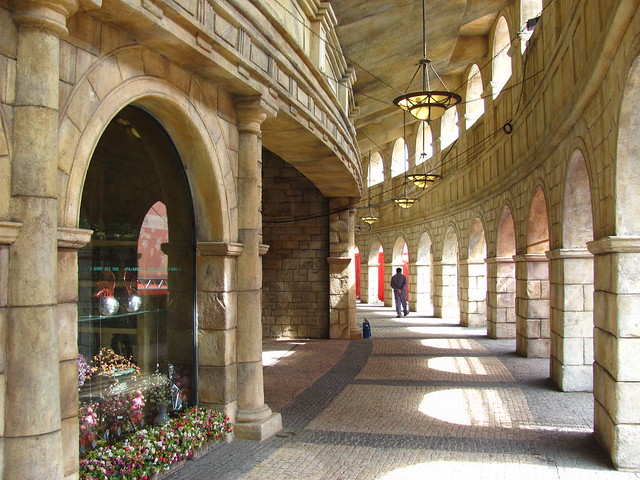
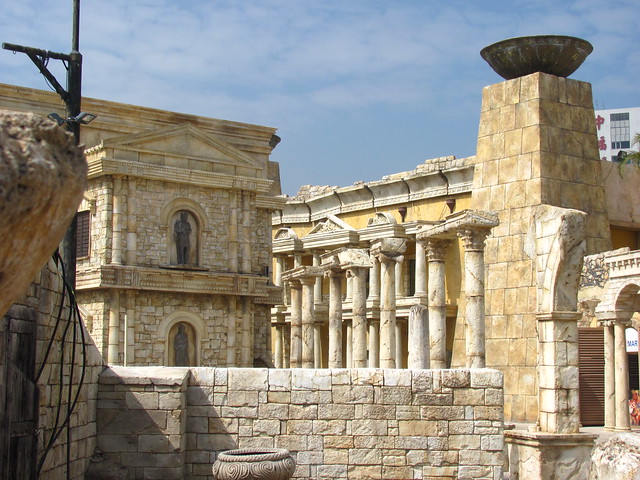

 Looking across the bay at a rather strange design for a cable-stayed bridge.
Looking across the bay at a rather strange design for a cable-stayed bridge.
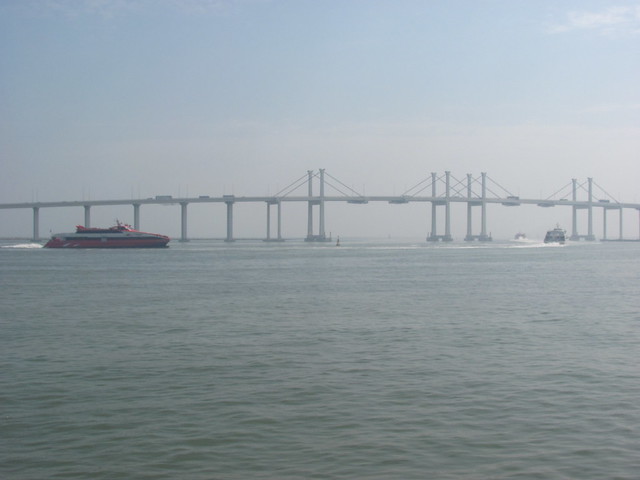 Okay, I’m not sure if this guy was trying to catch a fish or retrieve his glasses or what, but it was getting a lot of attention, especially as the kid next to him kept tossing bread in the water.
Okay, I’m not sure if this guy was trying to catch a fish or retrieve his glasses or what, but it was getting a lot of attention, especially as the kid next to him kept tossing bread in the water.
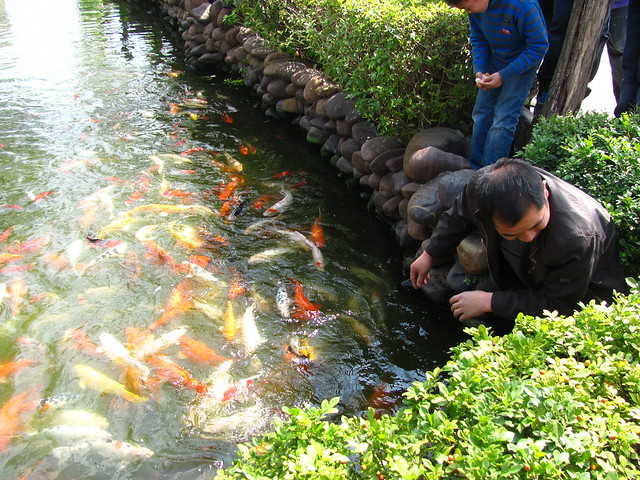 We next explored one of the casinos, but only to look at the interior, we weren’t going to play any games on a university function, and photos weren’t allowed inside so the experience quite literally failed to leave a lasting impression. So onward to the central marketplace and tourist corridor of Macau, where Lunar New Year was still being celebrated. Here, it’s written in both Cantonese and Portuguese.
We next explored one of the casinos, but only to look at the interior, we weren’t going to play any games on a university function, and photos weren’t allowed inside so the experience quite literally failed to leave a lasting impression. So onward to the central marketplace and tourist corridor of Macau, where Lunar New Year was still being celebrated. Here, it’s written in both Cantonese and Portuguese.
 The Portuguese influence wasn’t as strong in Macau as I might have expected; much like Hong Kong, there’s no significant population of Portuguese remaining. While Portuguese is still an official language that you’ll see on many signs, I don’t think it’s used in day-to-day exchange very frequently, as English, Cantonese, and Mandarin have much stronger dominance in the region. One way Macau is different from Hong Kong is the prevalence of historic European architecture, mostly in churches, since the Portuguese were big on spreading religion as part of their colonialism in a way that the British really weren’t. Yet perhaps even more so than the much larger Hong Kong, Macau is struggling to retain its unique identity amid a changing cultural tide as it becomes more connected to the mainland. At the end of the century we may only have some words and old buildings to remind us of what once was here. That certainly won’t be a first.
The Portuguese influence wasn’t as strong in Macau as I might have expected; much like Hong Kong, there’s no significant population of Portuguese remaining. While Portuguese is still an official language that you’ll see on many signs, I don’t think it’s used in day-to-day exchange very frequently, as English, Cantonese, and Mandarin have much stronger dominance in the region. One way Macau is different from Hong Kong is the prevalence of historic European architecture, mostly in churches, since the Portuguese were big on spreading religion as part of their colonialism in a way that the British really weren’t. Yet perhaps even more so than the much larger Hong Kong, Macau is struggling to retain its unique identity amid a changing cultural tide as it becomes more connected to the mainland. At the end of the century we may only have some words and old buildings to remind us of what once was here. That certainly won’t be a first.
While it might not have seemed like it at Fisherman’s Wharf, it was still the first weekend after Lunar New Year. The city was REALLY crowded.

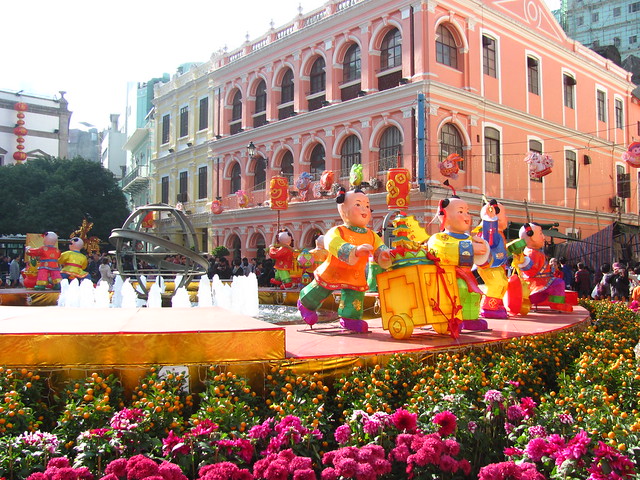
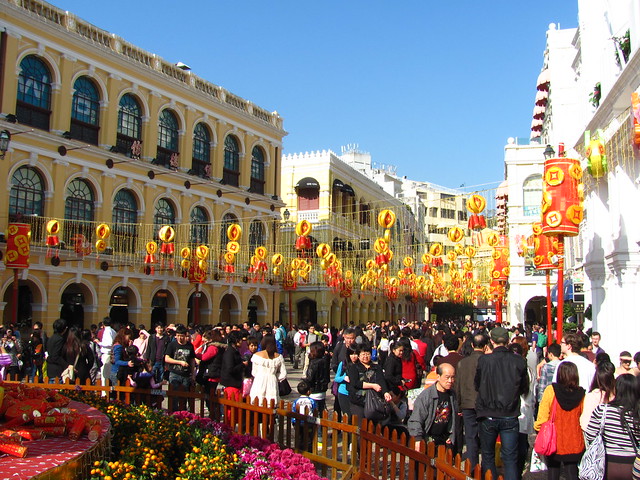


 At last we arrived at our destination: The Ruin’s of St. Paul’s. Built from 1602 to 1640 and serving as a school and a church before everything but the facade burned down during a typhoon in 1835, the ruins have improbably managed to last to the present day, where it is now one of the most popular landmarks in Macau. There’s not a whole lot to see, but it’s still a beautiful structure made even more unique by its seeming precariousness and noble isolation against the blue sky. Certainly worth getting a picture in front of, which I did.
At last we arrived at our destination: The Ruin’s of St. Paul’s. Built from 1602 to 1640 and serving as a school and a church before everything but the facade burned down during a typhoon in 1835, the ruins have improbably managed to last to the present day, where it is now one of the most popular landmarks in Macau. There’s not a whole lot to see, but it’s still a beautiful structure made even more unique by its seeming precariousness and noble isolation against the blue sky. Certainly worth getting a picture in front of, which I did.

 St. Paul’s is also often known as “Mater Dei” (Latin for “Mother of God”), since it’s the only prominent written inscription on the facade. (Kinda reminds me of how the Led Zeppelin IV album also became known as “Zoso” since it was the only visible lettering on the otherwise unnamed album. Probably an inappropriate comparison for a place of religious worship.) Anyway, I really like this photo; when I think back on Macau, it’s almost entirely represented by this one image.
St. Paul’s is also often known as “Mater Dei” (Latin for “Mother of God”), since it’s the only prominent written inscription on the facade. (Kinda reminds me of how the Led Zeppelin IV album also became known as “Zoso” since it was the only visible lettering on the otherwise unnamed album. Probably an inappropriate comparison for a place of religious worship.) Anyway, I really like this photo; when I think back on Macau, it’s almost entirely represented by this one image.
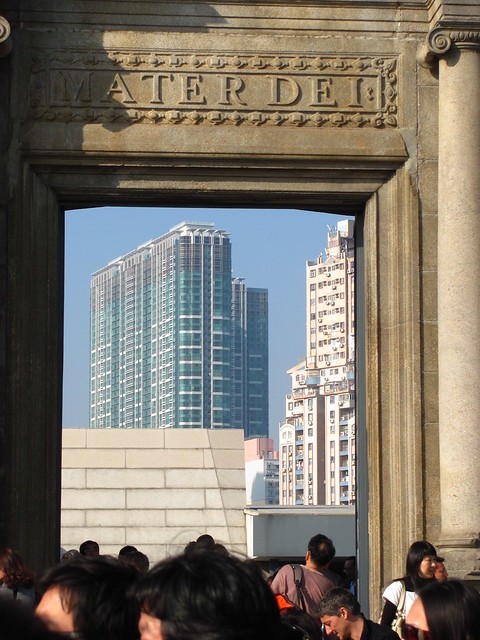 The backside has a staircase to observe through the upper windows, as well as a museum integrated with the rest of the ruins, which I didn’t have time to explore.
The backside has a staircase to observe through the upper windows, as well as a museum integrated with the rest of the ruins, which I didn’t have time to explore.
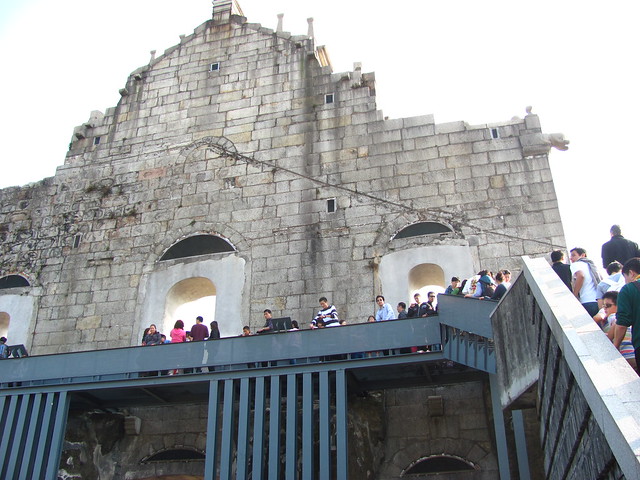
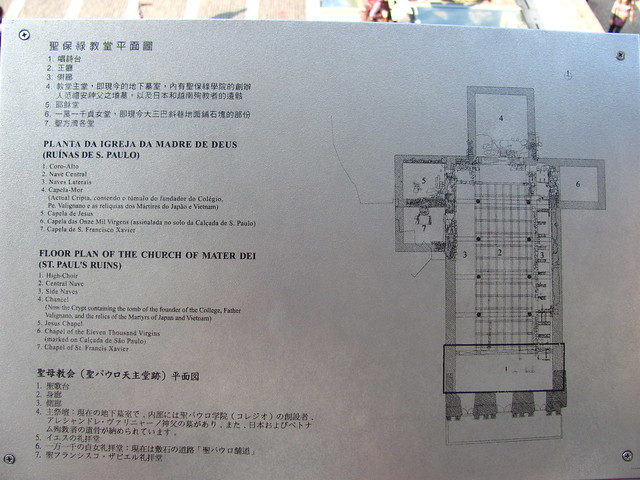
 Visible from the top is the enormous Grand Lisboa hotel, which looks like an alien spacecraft has landed.
Visible from the top is the enormous Grand Lisboa hotel, which looks like an alien spacecraft has landed.

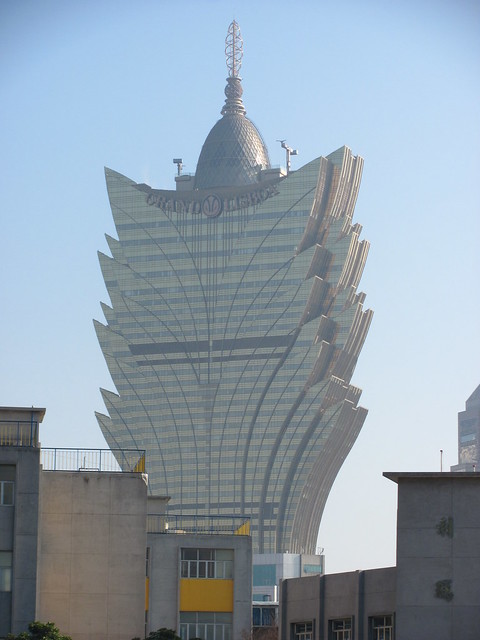 On our way back to the ferry we also passed through the Casino Lisboa, an older facility adjacent to the much sleeker Grand Lisboa.
On our way back to the ferry we also passed through the Casino Lisboa, an older facility adjacent to the much sleeker Grand Lisboa.
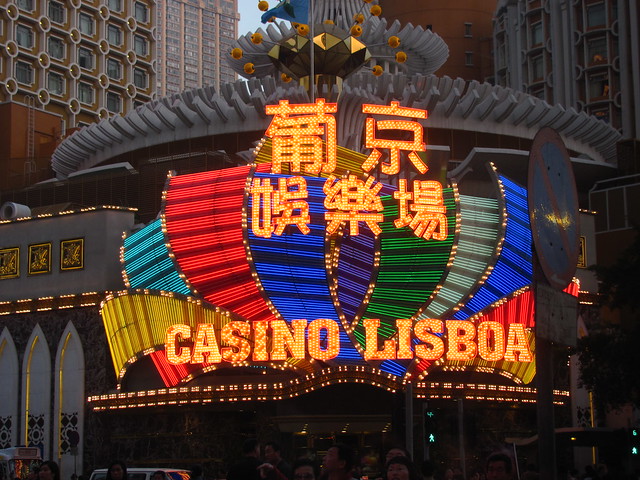


 And with that, our tour of Macau was at an end. Couldn’t say that I really had a chance to fully understand the city, nor did it give me a burning desire to return, but it was fun to experience it with others. We never stopped to eat good Macanese food while in Macau, but later that week we did try a place in Hong Kong. I ordered a “macaroni in tomato broth with ham, egg and pork chop soup”, and it was quite delicious! While dim-sum is delightful, most Cantonese food is rather bland by Chinese cuisine standards, with lots of steaming but not a lot of spices. Combining it with more of a Portuguese flavor profile definitely made for a brighter and tastier meal.
And with that, our tour of Macau was at an end. Couldn’t say that I really had a chance to fully understand the city, nor did it give me a burning desire to return, but it was fun to experience it with others. We never stopped to eat good Macanese food while in Macau, but later that week we did try a place in Hong Kong. I ordered a “macaroni in tomato broth with ham, egg and pork chop soup”, and it was quite delicious! While dim-sum is delightful, most Cantonese food is rather bland by Chinese cuisine standards, with lots of steaming but not a lot of spices. Combining it with more of a Portuguese flavor profile definitely made for a brighter and tastier meal.
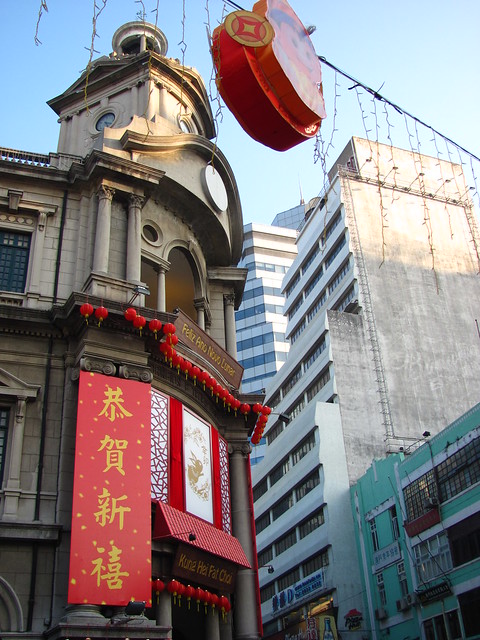
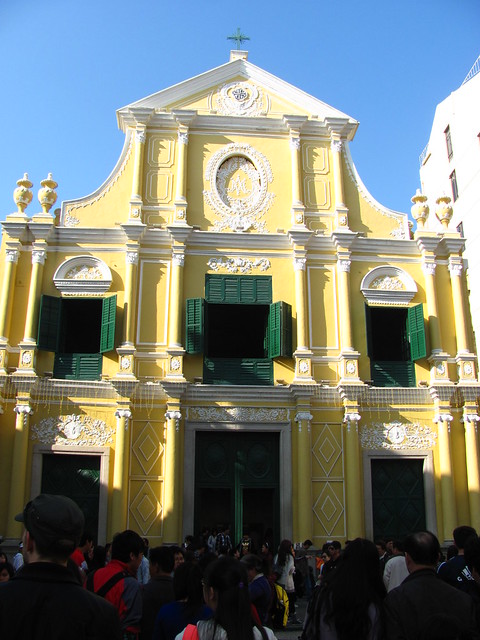
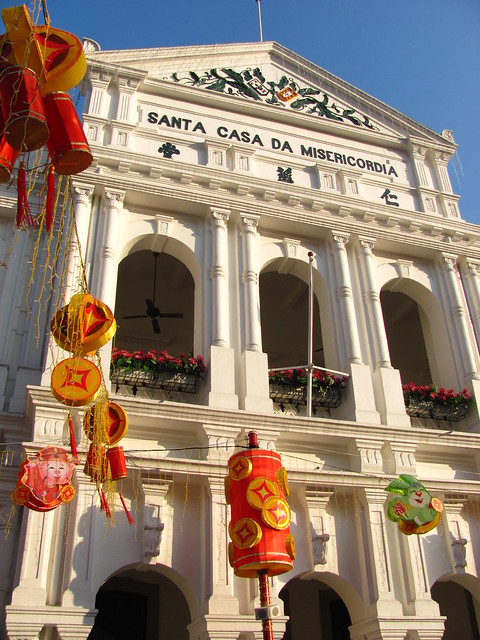
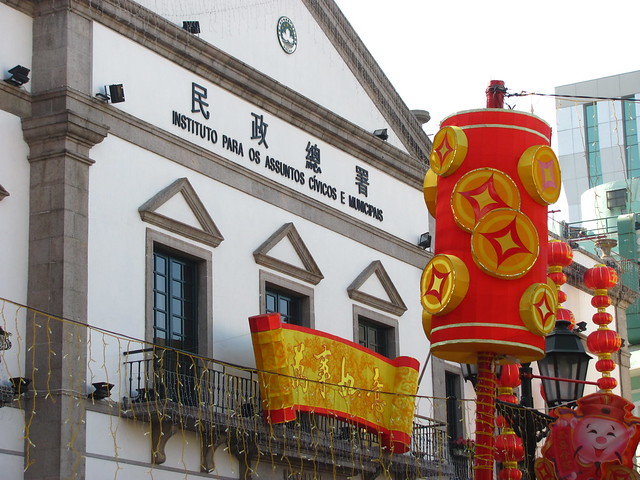
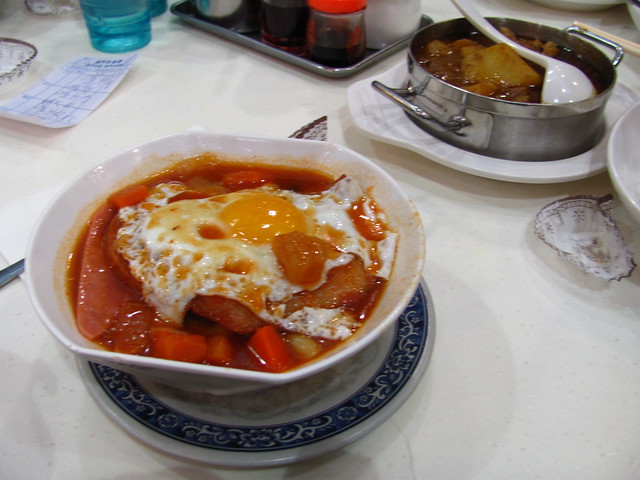
Comments